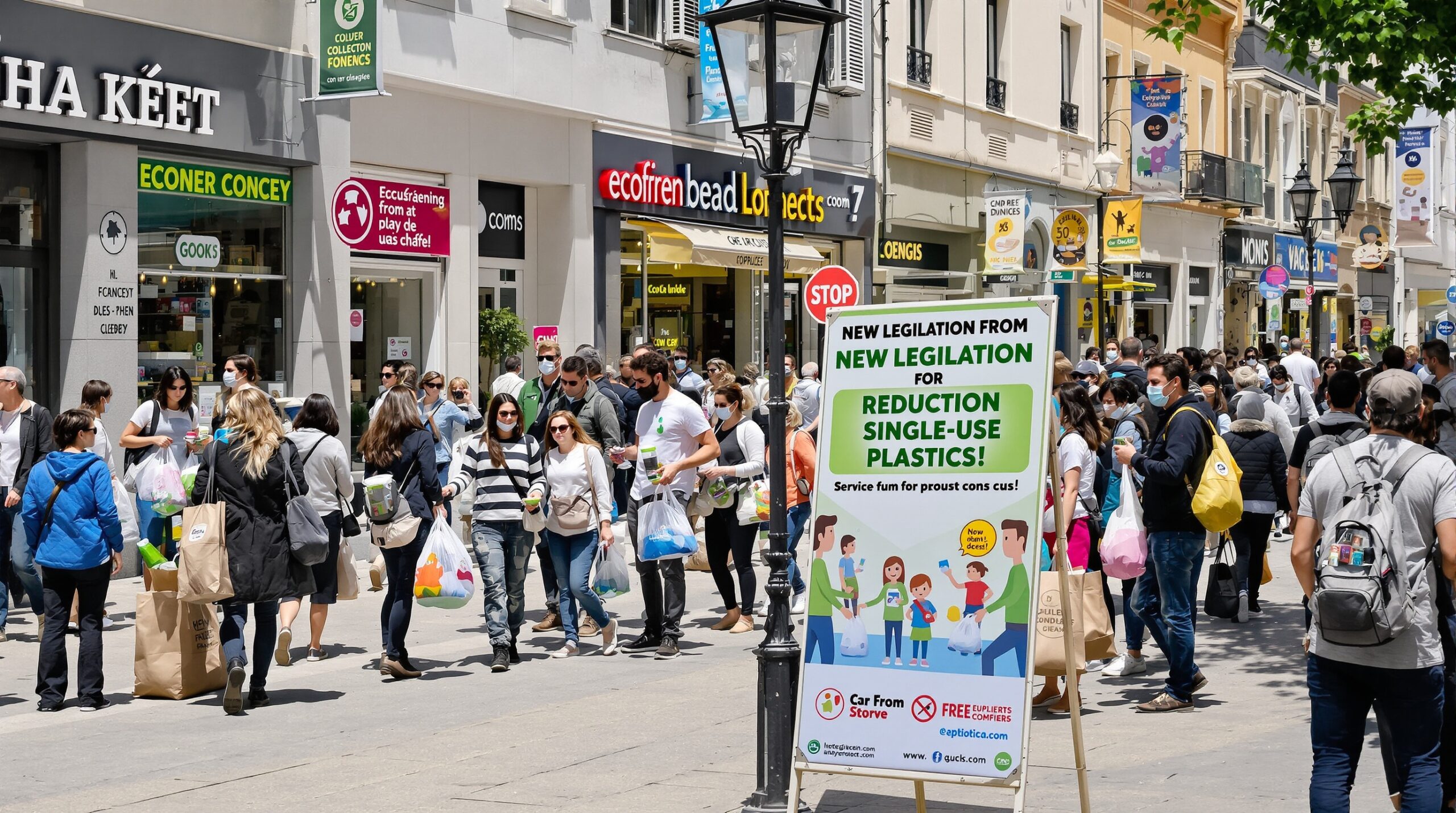European countries are taking decisive steps to curb plastic pollution through new laws targeting single-use plastics. These legislative efforts seek to protect the environment, preserve marine life, and promote sustainable alternatives. As single-use plastics contribute heavily to pollution, direct action has become necessary. Lawmakers, environmental organizations, and consumers are collaborating to shift Europe toward a greener future.
The Scope of Single-Use Plastic Legislation
European laws focus on banning or restricting the most common single-use plastic products. Items such as straws, cutlery, plates, stirrers, cotton bud sticks, and food containers are included. These everyday objects often end up in oceans and waterways, harming wildlife and marine ecosystems. The new rules also target polystyrene containers and products made from oxo-degradable plastics.
The directives encourage the use of environmentally friendly alternatives, including reusable or biodegradable products. Manufacturers must redesign packaging and develop new materials that cause less harm to the environment. These measures aim to reduce overall plastic usage and promote a circular economy, where materials are reused and recycled.
Timeline and Implementation of Laws
The European Union adopted the Single-Use Plastics Directive (EU) 2019/904 in June 2019. Member States were required to transpose it into national law by July 2021. The directive’s implementation follows a specific timeline, with bans on certain products taking effect immediately. Additional measures, such as labeling changes and increased waste management, will be phased in over several years. This approach ensures governments and industries have time to adapt.
The directive sets ambitious collection targets for plastic bottles, mandating a 90% collection rate by 2029. Plastic bottles must contain at least 25% recycled content by 2025, increasing to 30% by 2030. These requirements push manufacturers to innovate and invest in sustainable production processes. The gradual introduction of these standards allows industry and consumers to adjust to new habits and technologies.
Nation-Specific Approaches and Initiatives
While the EU sets common goals, individual countries are adopting additional measures tailored to local needs. France, for instance, has enacted some of the strictest rules by banning plastic packaging for most fruits and vegetables. The country also prohibits plastic toys distributed with children’s meals at fast-food chains. Spain imposes special fees on certain plastic products and is expanding bottle deposit systems nationwide.
Germany has introduced higher recycling targets and implemented mandatory deposit schemes for more types of beverage containers. Italy supports research grants to develop alternatives to conventional plastics. Scandinavian countries lead in promoting refillable packaging and incentivizing shoppers to bring their own containers. While each nation’s approach varies, all share the objective of drastically reducing single-use plastic consumption and litter.
Impacts on Businesses and Consumers
The new laws force businesses to rethink product design and supply chains. Restaurants, retailers, and manufacturers must adapt quickly to remain compliant. Many are switching to paper, bamboo, or compostable materials for packaging and utensils. This transition is not without cost, as sustainable options often carry higher price tags. However, companies investing in innovation gain a competitive edge in the growing green market.
Consumers are also impacted, with daily habits changing due to the unavailability of familiar plastic products. People are encouraged to use reusable bags, bottles, and containers. Retailers offer incentives, such as discounts or loyalty points, for eco-conscious behavior. Although some consumers express frustration at the loss of convenience, greater awareness of environmental issues usually leads to broad support for greener choices.
Environmental Benefits and Progress
Legislative action already shows results. Plastic waste in European beaches and waterways is decreasing, according to environmental monitoring groups. Reduced litter leads to safer habitats for marine species and fewer cases of sea animals ingesting or being entangled in plastic debris. Improved recycling rates lessen the burden on landfills and reduce greenhouse gas emissions associated with plastic production and disposal.
Europe serves as a model for other regions considering similar bans. The integration of environmental goals into law demonstrates that large-scale change is possible. As the policies mature, ongoing evaluation and adaptation are necessary. Early evidence suggests the initiatives are effective, though challenges remain for comprehensive enforcement across all countries and sectors.
Remaining Challenges and Criticisms
Certain stakeholders argue that the focus on single-use plastics addresses only part of the broader pollution problem. Other sources of plastic pollution, such as microplastics from clothing and tires, require separate solutions. Critics also highlight that compliance and enforcement remain inconsistent across Europe. Some small businesses feel disproportionately burdened by the switch to alternative materials, especially when facing economic pressures from the pandemic and inflation.
There are also concerns about the effectiveness of biodegradable and compostable materials, which may not break down properly without industrial facilities. The design of plastic alternatives must consider entire product life cycles to avoid unintended environmental consequences. Additionally, public awareness campaigns must continue, ensuring consumers understand the benefits and requirements of these new laws. An engaged public is essential to achieving lasting change.
The Future of Plastic Reduction in Europe
European lawmakers continue to expand and refine policies targeting plastic waste. As science advances, new materials and recycling technologies are emerging. These developments promise even more effective solutions in the fight against pollution. Cross-border cooperation remains crucial, as plastic waste does not respect national boundaries. Europe’s experience can inform and inspire similar efforts worldwide.
Consumer preferences are rapidly shifting. More people seek sustainable products and support businesses embracing responsible practices. Companies that adapt early help shape market trends and influence competitors. Government support for research and education will accelerate progress and increase public engagement. With cooperation, innovation, and persistence, Europe can achieve its goal of drastically reducing single-use plastics and setting a global standard.
Conclusion
The reduction of single-use plastics through new legislation in Europe signals meaningful progress in protecting the environment. Policymakers, businesses, and consumers are working together to shape a cleaner, more sustainable future. As these rules take effect, Europe will continue to lead by example, offering valuable lessons for the rest of the world. Ongoing adaptation and commitment will be essential for long-term success.

